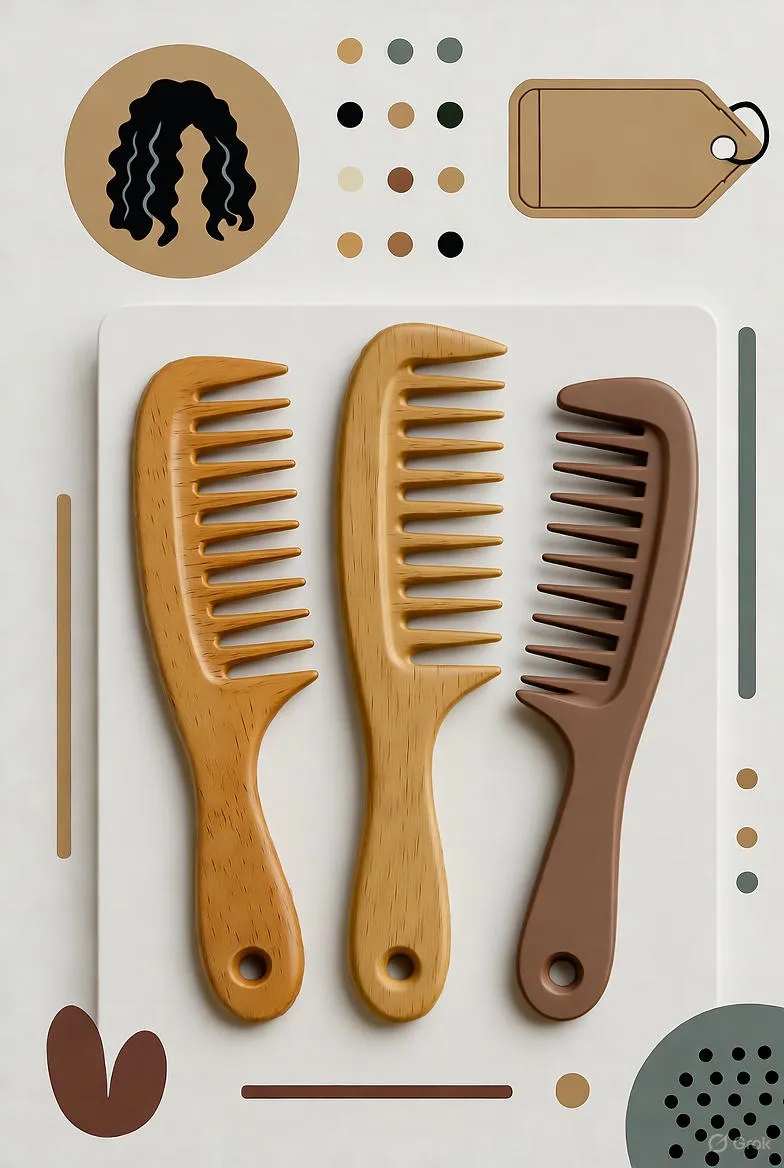Managing Curly Hair in Humidity: Keep Your Curls Defined and Frizz-Free
Learn expert strategies for managing curly hair in humidity. Discover effective products, styling techniques, and care routines to keep your curls defined, frizz-free, and beautiful in any weather.

Managing curly hair in humid conditions can often feel like an endless battle. The combination of moisture in the air and the natural porosity of curly hair leads to frizz, puffiness, and loss of definition. However, with the right care routine and product strategy, your curls can remain beautiful, bouncy, and well-defined even in the most humid climates. This article explores effective techniques, hair care habits, and scientifically backed insights to help you embrace your curls confidently, no matter the weather.
Understanding Why Humidity Affects Curly Hair
Humidity refers to the amount of water vapor in the air. When humidity levels are high, the air contains more moisture, which interacts with the hydrogen bonds in your hair. Curly hair, by nature, is more porous and more susceptible to environmental changes. When your hair absorbs too much moisture, it swells, causing the cuticle layer to lift. This leads to frizz, loss of curl pattern, and an overall unkempt look.
Curly hair also has a more uneven surface than straight hair, meaning it reacts more dramatically to moisture fluctuations. This is why managing hydration levels is crucial in preventing frizz and maintaining consistent curl formation throughout the day.
Step-by-Step Routine for Managing Curls in Humidity
1. Start with a Hydrating Shampoo and Conditioner
Curly hair thrives on moisture, but it’s important to control how that moisture is absorbed. Choose a sulfate-free shampoo that cleans without stripping natural oils. Follow up with a deeply hydrating conditioner containing humectants like glycerin or aloe vera, but be cautious—too many humectants in high humidity can backfire by drawing in excessive moisture from the air. Opt for balanced formulations that also include emollients such as shea butter or coconut oil to seal the cuticle.
2. Use a Leave-In Conditioner
Leave-in conditioners are essential in humid climates. They provide a protective layer that helps lock in internal moisture and repel external humidity. Apply your leave-in on damp hair, focusing on the mid-lengths and ends where dryness occurs most frequently.
3. Apply Anti-Humidity Styling Products
Styling creams, serums, or gels that are specifically formulated for humidity protection can work wonders. Look for ingredients like dimethicone or amodimethicone, which form a lightweight barrier around the hair shaft. Alternatively, if you prefer silicone-free products, use plant-based sealants such as jojoba or argan oil for natural protection.
4. Seal with Oils or Butters
After applying your styling product, use a small amount of oil to lock in hydration. This step helps to flatten the hair cuticle, reducing the likelihood of frizz caused by excess water absorption. Oils like marula, avocado, or olive oil provide both nourishment and defense against humidity-induced puffiness.
5. Dry with Care
Traditional towel drying can cause friction and lead to frizz. Instead, gently scrunch your hair using a microfiber towel or a cotton T-shirt to remove excess water. Air drying is ideal, but if you must use a hairdryer, attach a diffuser and set it to low heat to minimize damage.
6. Refresh Your Curls Throughout the Day
Humidity can cause curls to lose their shape as the day progresses. To revive your style, mix a curl refresher spray using water, a small amount of leave-in conditioner, and a few drops of your favorite oil. Lightly spritz and reshape curls with your fingers to restore bounce and definition.
Long-Term Strategies to Reduce Frizz
Deep Conditioning Treatments
Regular deep conditioning treatments are the foundation of humidity management. Performing these treatments once a week helps to fortify the hair cuticle, improve elasticity, and retain internal moisture. Look for masks rich in proteins and natural oils for best results.
Protein-Moisture Balance
Maintaining the right balance between protein and moisture is key to curl health. Too much moisture without protein support can make hair overly soft and frizzy, while too much protein can lead to stiffness. Alternate between protein-rich and moisturizing treatments to achieve harmony.
Protective Hairstyles
On particularly humid days, opt for styles that minimize exposure to the air, such as braids, buns, or twists. These not only reduce frizz but also help preserve moisture levels. You can even experiment with satin scarves or turbans for an elegant, protective look.
Sleep Protection
Nighttime care plays a vital role in maintaining smooth curls. Sleep on a satin or silk pillowcase to prevent friction and moisture loss. Alternatively, wrap your hair in a silk bonnet or scarf to keep curls intact overnight.
Choosing the Right Products
When shopping for curly hair products suitable for humid weather, pay close attention to ingredient lists. Avoid heavy waxes, thick silicones that cause buildup, and drying alcohols. Instead, select lightweight formulas enriched with ingredients like:
- Shea Butter: Nourishes and seals moisture without weighing down curls.
- Coconut Oil: Prevents excessive swelling of the hair shaft.
- Argan Oil: Provides shine and smoothness while controlling frizz.
- Aloe Vera: Hydrates and soothes the scalp.
- Panthenol: Strengthens hair and improves elasticity.
Common Mistakes to Avoid
- Overusing Humectants: While helpful, they can worsen frizz in extremely humid climates if not balanced with sealants.
- Skipping Regular Trims: Split ends and damaged hair amplify frizz, so maintain trims every 6-8 weeks.
- Applying Too Much Product: Overloading hair can cause buildup and limp curls. Use minimal, well-distributed amounts.
- Ignoring Water Quality: Hard water can lead to buildup and dull curls. Consider using a shower filter to protect your hair.
Final Thoughts
Managing curly hair in humidity is less about fighting nature and more about understanding it. By balancing moisture, protecting the cuticle, and using the right combination of products, you can enjoy soft, defined curls regardless of the weather. Embrace your natural texture with confidence, armed with knowledge and consistency. Remember, your curls are unique—and with proper care, they can thrive beautifully, even when the air is thick with moisture.
Pro Tip:
Keep a travel-sized anti-humidity spray or lightweight oil in your bag. A quick touch-up can make a significant difference in maintaining definition during unexpected weather changes.


